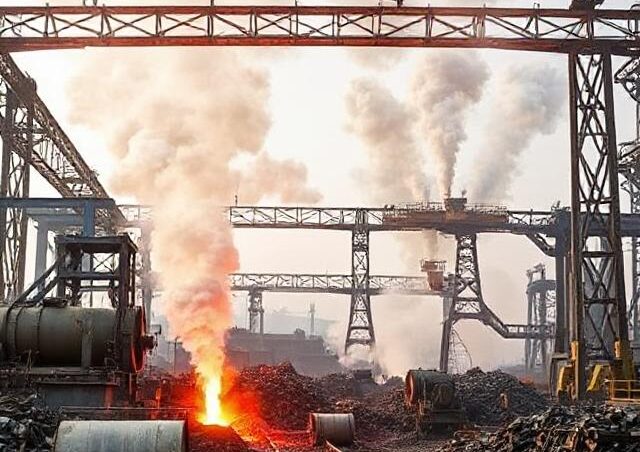India’s steel industry, a cornerstone of its industrial and urban growth, faces a critical challenge: achieving net-zero emissions while meeting the surging demand for steel. As the nation strives towards its 2070 net-zero target, the spotlight is on innovative solutions like steel recycling, low-carbon construction, and green steel initiatives, which together form the backbone of a sustainable future.
The Story Behind Steel Sustainability
The narrative of green steel in India is shaped by necessity and opportunity. Rapid urbanisation and infrastructure growth have intensified the demand for steel, making traditional production methods environmentally costly. To reconcile industrial growth with climate goals, the government and industry leaders have launched initiatives to boost recycled steel usage, promote low-carbon construction, and integrate renewable energy into steel production. These moves are part of a broader story of transformation where technology, policy, and market forces converge to redefine how steel is produced and consumed.
Design and Structural Aspects
Steel recycling not only reduces carbon emissions but also affects structural design. Recycled steel retains the same tensile strength and durability as primary steel, allowing architects and engineers to maintain structural integrity in buildings and infrastructure projects. Innovative structural designs now incorporate modular components, prefabricated elements, and optimised steel frameworks that reduce material usage while enhancing load-bearing capacity. Low-carbon construction methods encourage the integration of energy-efficient systems and sustainable building materials, creating resilient structures that meet modern performance standards without compromise.
Green Steel Initiatives
India’s Green Steel Mission exemplifies the push toward net-zero. It provides incentives for producing green steel, encourages government procurement of low-emission products, and supports the adoption of renewable energy in production. By 2030, India aims to reduce emissions intensity from 2.65 to 2.20 tonnes of CO₂ per tonne of finished steel. These steps not only lower the carbon footprint of steel but also open avenues for innovation in design, engineering, and material efficiency.
The government is preparing a ₹5,000 crore mission to help steelmakers adopt clean technologies, focusing on secondary producers while pushing green steel demand and procurement. This initiative includes concessional loans, risk guarantees, and other financial tools to facilitate the transition.
Additionally, the National Green Hydrogen Mission mandates that all upcoming steel manufacturing units should be capable of operating with green hydrogen. This policy aims to reduce reliance on coal-based technologies, which currently contribute approximately 12 percent of India’s emissions.
Innovation Meets Opportunity
The drive toward sustainable steel has also sparked innovations in material science and construction technology. Startups and established players alike are experimenting with hybrid materials, steel composites, and automated fabrication techniques that optimise material use while reducing waste. Circular economy models, such as urban scrap collection programs, are helping feed recycled steel back into construction pipelines, creating a self-sustaining loop. These developments are not only environmentally significant but also economically advantageous, offering cost efficiencies and resilience in long-term infrastructure planning.
Looking Ahead
India’s journey toward a net-zero steel industry is dynamic and inspiring. By blending structural innovation, recycling, and green production, the steel sector is poised to become a model of sustainable industrial growth. Readers keen on the future of construction and industrial practices will find rich lessons in how design, technology, and policy converge to create resilient and responsible infrastructure. Stay connected as India continues to craft steel solutions that are robust, eco-conscious, and ready to support the cities of tomorrow.




